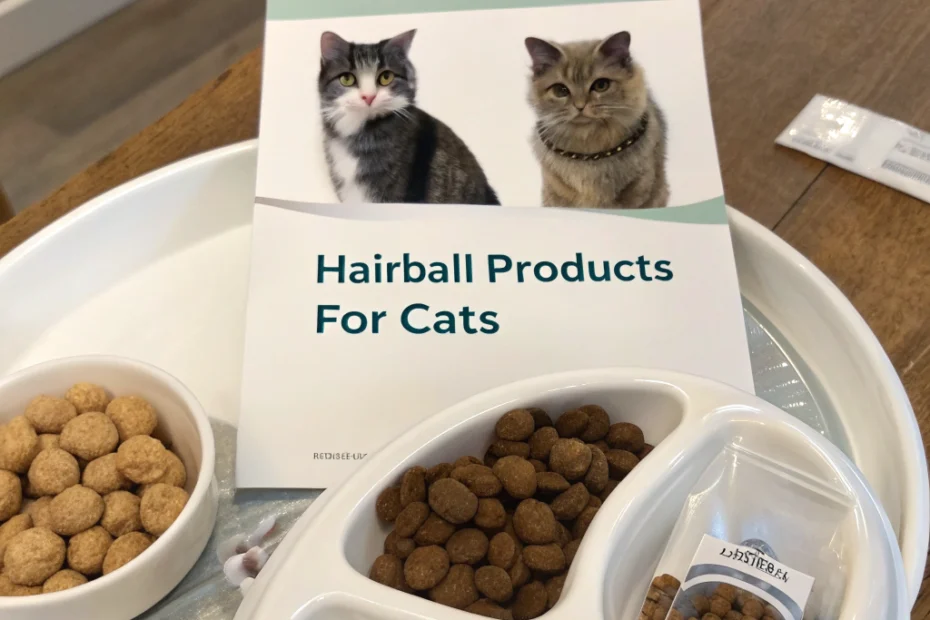At-a-Glance
If you’re a cat owner, you’ve likely encountered the occasional hairball. These are not just messy but can also be uncomfortable for your feline friend. Hairballs occur when cats groom themselves and ingest loose fur, which then accumulates in their digestive tract. While some cats pass these naturally, others may need assistance from specialized products.
Hairball products for cats are designed to support your pet’s digestive system and help them manage this common issue more effectively. From dietary supplements to specially formulated foods, there are various options available that can make life easier for both you and your cat.
How to Choose
Selecting the right hairball product involves understanding your cat’s specific needs. Here are some factors to consider:
- Age and Health: Younger cats might have different requirements compared to older ones or those with existing health issues.
- Dietary Preferences: Some products come in flavors or forms that might appeal more to picky eaters.
- Lifestyle: Indoor cats may require different solutions than outdoor ones due to varying grooming habits.
- Ingredients: Look for natural ingredients that promote healthy digestion without unnecessary additives.
A veterinarian can provide guidance tailored specifically to your cat’s needs, ensuring you choose an effective product.
Safety & Setup
The safety of any product is paramount when it comes to our pets. Before introducing a new hairball remedy into your cat’s routine, consider these safety tips:
- Dosing Instructions: Follow all instructions provided by the manufacturer carefully.
- Sensitivity Testing: Start with a small amount of any new product to ensure there’s no adverse reaction.
- Shelf Life: Check expiration dates regularly; expired products may lose efficacy or become harmful.
Create a setup where administering these treatments becomes part of a regular routine—whether mixed into food or given as treats—to make it seamless for both you and your pet.
Core Pillars
The core pillars of managing hairballs involve prevention through diet, grooming practices, and hydration. Here’s how each plays a role:
- Nutritional Support: High-fiber diets can aid digestion by moving ingested fur through the gastrointestinal tract more efficiently.
- Regular Grooming: Brushing reduces loose hairs that could otherwise be swallowed during self-grooming sessions.
- Adequate Hydration: Ensuring your cat drinks enough water helps maintain digestive health overall.
Placement & Environment Tips < p > Your home environment contributes greatly toward mitigating potential problems associated with excessive shedding leading up towards formation . Consider implementing following changes : < ul >< li >< strong > Clean Living Spaces : Regularly vacuum areas frequented by pets remove excess fur before ingestion occurs . < li >< strong > Comfortable Sleeping Areas : Provide soft bedding materials encourage relaxation reduce stress levels indirectly affecting frequency . < p >< h3 >< ol start = "1" type = "1" style = "list-style-type: decimal; margin-left: 40px;" class = "">< / ol >< / div >< / div >< section id="section-5" class="section">
🌟 Important Note:
Some of the links in this article are affiliate links. If you choose to make a purchase, we may earn a small commission — at no extra cost to you.
We only recommend products we believe will genuinely help your cat live a healthier, happier life. Always consult your veterinarian before making any changes to your cat’s diet. 🐾
Some of the links in this article are affiliate links. If you choose to make a purchase, we may earn a small commission — at no extra cost to you.
We only recommend products we believe will genuinely help your cat live a healthier, happier life. Always consult your veterinarian before making any changes to your cat’s diet. 🐾
